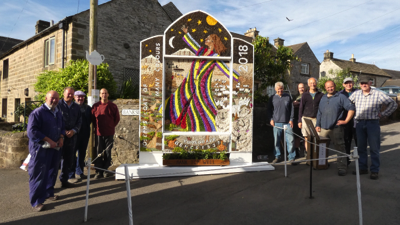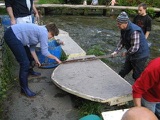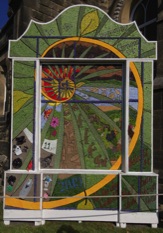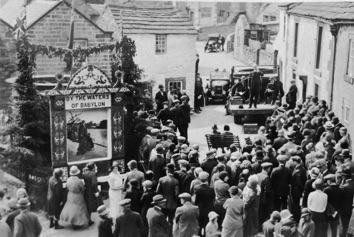Origins of Welldressing
The village of Youlgrave has more reason than others in Derbyshire to give thanks for water by celebrating welldressing as we have our very own water supply which has never let us down. The custom must have its origin in pagan ritual, when flowers and greenery were placed beside springs and wells to placate the gods and spirits who were believed to dwell within them.
It is not recorded how long the custom has been practised in Youlgrave, but in 1829 water was first piped to the ‘Fountain’ in the centre of the village. From this time dressings have been erected as a thanksgiving for water by the villagers freed from the burden of toiling up the hillside from the river with their yokes and pails of water.
In 1869 taps were placed along the village street, loosely defining the present day sites.
The welldressing process
Welldressings are pictures made of natural materials including flowers, leaves, mosses, cones and wool. The process takes the volunteer teams five consecutive days and a great deal of skill and enthusiasm to complete. Here’s how its done.
Boards in the river The welldressing boards are soaked in the river for ten days, weighted down by rocks to ensure they are completely sodden. This helps to keep the materials fresh because the clay stays fresh longer.
Puddling the clay The clay is thrown onto the boards (usually by over enthusiastic children), and smoothed out by hand whilst checking that there are no stones or bits of stick left in that could damage the delicate petals.
The design When the boards have been prepared and moved to the sheds and garages, they are ready to receive each well’s unique design. These designs are drawn out to full size and placed directly onto the clay. The image is then marked out by pricking the design through the paper with a sharp implement. The paper is then carefully removed and the design outlined with wool, hen beans (sweet corn) or cones.




